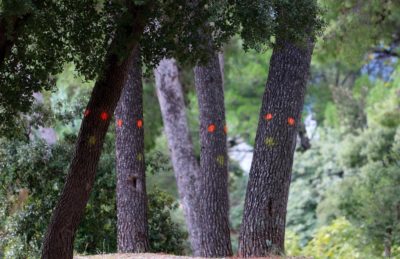
The term “mature stands” is conditional and changeable, as with the development of wood processing industry, a special processing technology, with respect to use of forest, stands becomes mature much earlier. The main harvest can be made and the time when the stand is not completely physiologically ripe, ie. when it has not reached the age of physiological maturity – fruiting. This means that some side logging can become major. Maturity stands can be determined from several aspects: biological, technical, economic and functional.
From the biological point of distinction must be physiological and physical maturity of trees and stands. Physiological maturity of the trees is the age at which they start fruiting trees healthy and high-quality seed. Physical maturity appearances, when it begins the decay and death of trees in the stand.
Maturity stands with technical aspects can be characterized in two ways: as the age when the trees reach the desired dimensions, which were set up as a production goal, for example: poles for power lines; or when in the stand accomplish adequate amounts of the desired assortments.
Economic maturity stands related to the maximum effect the production of the total timber volume and volume increment, or “economic effect”. In this sense it can be characterized as the absolute economic maturity – maturity stands where the achieved maximum production of timber volume, or in which culminates the average volume increment; or as a true economic maturity, ie. age period when the stand has a maximum value of growing stock, ie. time of culmination of average volume increment value stands.
Functional maturity stands, is actual in terms of multifunctional forest management, and multi-purpose use of forests specific area. In doing so, it is possible to define two ways: maturity optimal functional structure that represents a specific structural form of forests to ensure the functioning of a certain functional type of forest, for example: tightly coupled forests for water protection forests, etc .; ecological maturity, which implies an optimal environmental impact of forest. For example: the maximum erosion effect of the forest, composition, mixtures, the age and structure of the forest, which has the highest interception, etc.
Based on a detailed analysis of those various criteria for determining maturity stands for cutting, determined forest-breeding maturity stands. It is – the period of life (age) forest stand in which, by applying appropriate logging renewal, can start the function defined by the systematic rejuvenation of the stand, ie. Planning organized a gradual change of generations existing forests. This is the stage of physiological maturity stands and abundant fruiting, which is the basic prerequisite for natural regeneration from seed.
There are economic and breeding time of renewal.
Economic renewal time stands characterized by the best exploitation of the concrete stands within the theoretical production potential habitats. This time of renewal as the culmination of the average value increment.
Breeding time of renewal, is the period when it begins the occurrence new growth and generation shift of forest. As a mid-regeneration period, taken during the culmination of habitat productivity.
This problem entails a different understanding of the rotation, which represents a period of time since the establishment of the stand until the beginning of recovery, or perform main logging. This is the length of the production process in forestry, ie. simplified terms, a period of “sowing to harvest.”
Rotation the high forests of almost all major species of forest trees as a rule, ranged from 120 to 140 years. The rotation, which is linked to time of physiological maturity stands, is called the physical rotation. When performed before the main harvest time of physiological, and physical maturity stands, as a result of technological sophistication of procedures for the use of timber physiologically immature stands, then this is a technical rotation. If the runtime renewal logging is determined on the basis of economic maturity stands, talk about the economic (the value) rotation. When the criteria for determining maturity stands functional aspect of forest, then the length of the production process represents the function (functional) rotation.
